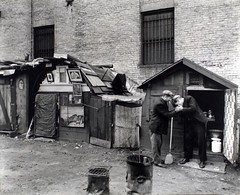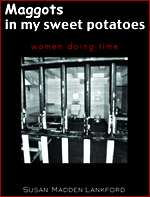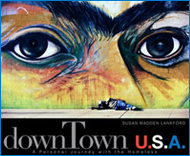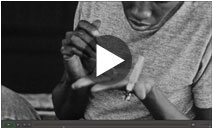 It’s been a long time coming, but tomorrow Born, Not Raised: Voices from Juvenile Hall will be available for sale to the public!
It’s been a long time coming, but tomorrow Born, Not Raised: Voices from Juvenile Hall will be available for sale to the public!
Here are a few excerpts from the preliminary reviews to help whet your appetite.
Publisher’s Weekly was kind enough to review the book a few weeks ago, describing it as follows:
Lankford and her daughter, Polly, visit “the Hall” over a one-year period, refracting their discoveries though the lenses of juvenile legal professionals, psychiatrists, and academic literature. Their quest unearths a collective legacy of addiction and abuse that drives children to drugs, gangs, and violence. Disputing the notion that delinquents are beyond repair, Lankford argues that most inmates can transform their traumatic histories into productive maturity if sustained by just one ‘good enough’ adult.
Karen Billing, a writer for Rancho Sante Fe, examined the history of both the book and Humane Exposures Publishing in a recent article. Here is some of what she had to say about Born, Not Raised:
‘Born, Not Raised’ exposes the gaps in these children’s development, as well as in the system and offers some possible solutions: ‘Could the answer be in parenting, education and learning to raise children responsibly in today’s world?’ Madden Lankford writes.
GoodReads reviewer Susan had this to say:
In this newest book, Susan and daughter Polly tackle the prickly problem of teens who are living in Juvenile Hall, essentially prison for children. Ms. Lankford’s photography is astounding. Her writing is beautiful. But most importantly, she lets the people she and Polly interview speak for themselves.
We are also thrilled that the esteemed Library Journal covered our book (via Barnes and Noble website):
More policy-oriented than academic in tone, this book is recommended for specialized juvenile justice collections and libraries holding the other two volumes in the series. Though government austerity is in vogue, this book is a powerful reminder of the social costs of neglecting the specific needs of at-risk youth.
Judge Irene Sullivan, Author of Raised by the Courts, was kind enough to share her opinion as well:
Susan Lankford captures the heart and soul, aspirations, hopes and fears, of kids in the juvenile justice system. If only juvenile judges could have access to the writings, photographs and stories of the kids she’s met, juvenile court would be much more rehabilitative.
We hope that the message of fiscal sense and social responsibility that our books propose gain more attention with this release. The cost, both monetary and socially, of continuing to avoid these issues is massive.
To order online, by mail, or over the phone please look here!















